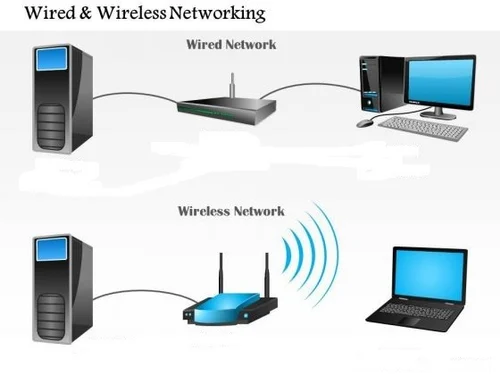Microcontroller Types & Prices – A microcontroller is a compressed microprocessor designed to manage embedded systems in office equipment, robots, home appliances, cars, and several other devices. With processor memory and peripherals that can be utilized as an 8051 Microcontroller, it can be viewed as a self-contained system. Most modern microcontrollers are integrated into other types of technology, like cars, phones, appliances, and computer system peripherals.
Although the microcontroller is a fast device, it operates more slowly than a computer; therefore every command is carried out in the microcontroller at an incredible rate. The quartz oscillator is enabled by the control logic register in case of power supply is turned ON, The parasite capacitors are charged in the initial milliseconds when the early preparation is taking place.
The process of writing bits to special function registers begins when the voltage level reaches its maximum value and the quartz oscillator’s frequency stabilizes. Moreover, the oscillator’s clock sets everything in motion, and the electronics as a whole begin to function.

Types of Microcontroller
A microcontroller is a compact integrated circuit designed to govern a specific operation in an embedded system. A typical microcontroller includes a processor, memory, and input/output (I/O) peripherals on a single chip. Check below to check out the details.
1. PIC Microcontroller
PIC, which stands for peripheral interface controller, is a class of microcontroller parts that have been used to create electronic gadgets, computer robots, and related hardware. Moreover, it is a peripheral interface controller, developed by the general instrument’s microelectronics, in the year 1993. It is controlled by the software. Also, they could be programmed to complete many tasks and control a generation line and many more. PIC microcontrollers are finding their way into new applications like smartphones, audio accessories, video gaming peripherals, and advanced medical devices.
There are many PICs, started with PIC16F84 and PIC16C84. But these were the only affordable flash PICs. Microchip has recently introduced flash chips with types that are much more attractive, such as 16F628, 16F877, and 18F452. The 16F877 is around twice the price of the old 16F84 but has eight times the code size, much more RAM, much more I/O pins, a UART, A/D converter, and a lot more.
2. ARM Microcontroller
Advanced RISC Machine is the ARM acronym. In the field of digital embedded systems, it is the most widely used microcontroller programming, and most companies only use ARM microcontrollers since they have important capabilities that enable the implementation of goods with a superior aesthetic. Also, it is a high-performance, cost-sensitive technology that has been employed in a variety of applications, including automobile body systems, industrial instrument control systems, wireless networking systems, and sensors.
3. 8051 Microcontroller
In 1981, Intel developed the 8051 microcontrollers. It is a 40-pin microcontroller with Vcc of 5V connected to pin 40 and Vss at pin 20 which is kept at 0V. There are input and output ports from P1.0 – P1.7 which have an open-drain feature. Moreover, Port3 has got extra features. Pin36 has the open-drain condition and pin17 has an internally pulled-up transistor inside the microcontroller.
When we apply logic 1 at port1 then we get logic 1 at port21 and vice versa. The programming of the microcontroller is dead complicated. Basically, we write a program in C-language which is next converted to machine language understood by the microcontroller. It is constructed with a 40-pin DIP (Dual inline package), 2 16-bit timers, 4 KB of ROM storage, and 128 KB of RAM storage. It has four parallel 8-bit ports that can be programmed and addressed following the standard.
4. AVR Microcontroller
Alf and Vegard’s RISC Processor is known as AVR. AVR microcontroller is developed by Alf-Egil Bogen and Vegard Wollan from Atmel Corporation. The AVR microcontrollers are modified Harvard RISC architecture with separate memories for data and program and the speed of AVR is high when compared to 8051 and PIC. The AVR stands for Alf-Egil Bogen and Vegard Wollan’s RISC processor.
It was a modified Harvard architectural machine with distinct physical memory systems for programs and data that appear in various address spaces and the ability to traverse information items from program memory by using specific shortcuts. AVR does not stand for anything in particular and is not an associate degree signifier.
5. MSP Microcontroller
A microcontroller like MSP430 is a 16-bit microcontroller. The term MSP is the acronym for “Mixed Signal Processor”. This microcontroller family is taken from Texas Instruments and designed for low-cost as well as low-power dissipation systems. This controller includes a 16-bit data bus, addressing modes-7 with a reduced instruction set, which permits a denser, shorter, programming code used for quick performance.
This Microcontroller is one kind of integrated circuit, used to execute the programs to control other machines or devices. Also, It is one kind of a micro-device, used to control other machines. The features of this microcontroller are normally obtainable with other kinds of microcontroller. Moreover, an IC chip called a microcontroller runs programs to control other machines or devices. Microcontroller programming refers to the micro-device in question, which is used to control other machines.
Price of Microcontrollers
Engineers create the code for a particular application using a microcontroller, compile it, and transfer it into the microcontroller, which internally has all of the computing resources required to run the code. Microcontrollers usually require less memory, computing power, and overall intricacy because of their specific applications’ limited scope; this results in a reduced cost.
Circuitrocks gives out microcontrollers at a price range starting from ₱ 705 – ₱2865. However, this depends on which model and type you are selecting.
Conclusion
When a microcontroller is powered on, it executes code stored in memory. This code can be pre-programmed or loaded onto the microcontroller later through a programming interface. As the microcontroller executes code, it can read input from sensors, perform calculations, and control output to devices such as motors or displays.
One of the key advantages of microcontrollers is their ability to operate in real time. Because they are designed for control applications, they can respond quickly to changes in input and provide output in real time. Moreover, this makes them ideal for applications such as robotics and automation.
FAQs on Microcontroller Types & Prices
Q1. What programming languages are used for microcontrollers?
A: Microcontrollers can be programmed in various languages, including C, C++, Assembly, and for some types, Python (MicroPython) or JavaScript (for IoT applications). The choice depends on the microcontroller’s architecture and the complexity of the project.
Q2. Can microcontrollers be used for high-speed processing applications?
A: While microcontrollers are powerful, they are generally not designed for high-speed processing compared to microprocessors. They are best suited for real-time applications requiring efficient control over hardware peripherals rather than high-speed computing.
Q3. How do microcontrollers communicate with other devices?
A: Microcontrollers communicate using I/O peripherals through protocols such as UART (serial communication), SPI, and I2C for wired communication, and sometimes wireless protocols like Wi-Fi and Bluetooth, depending on the microcontroller’s features.



